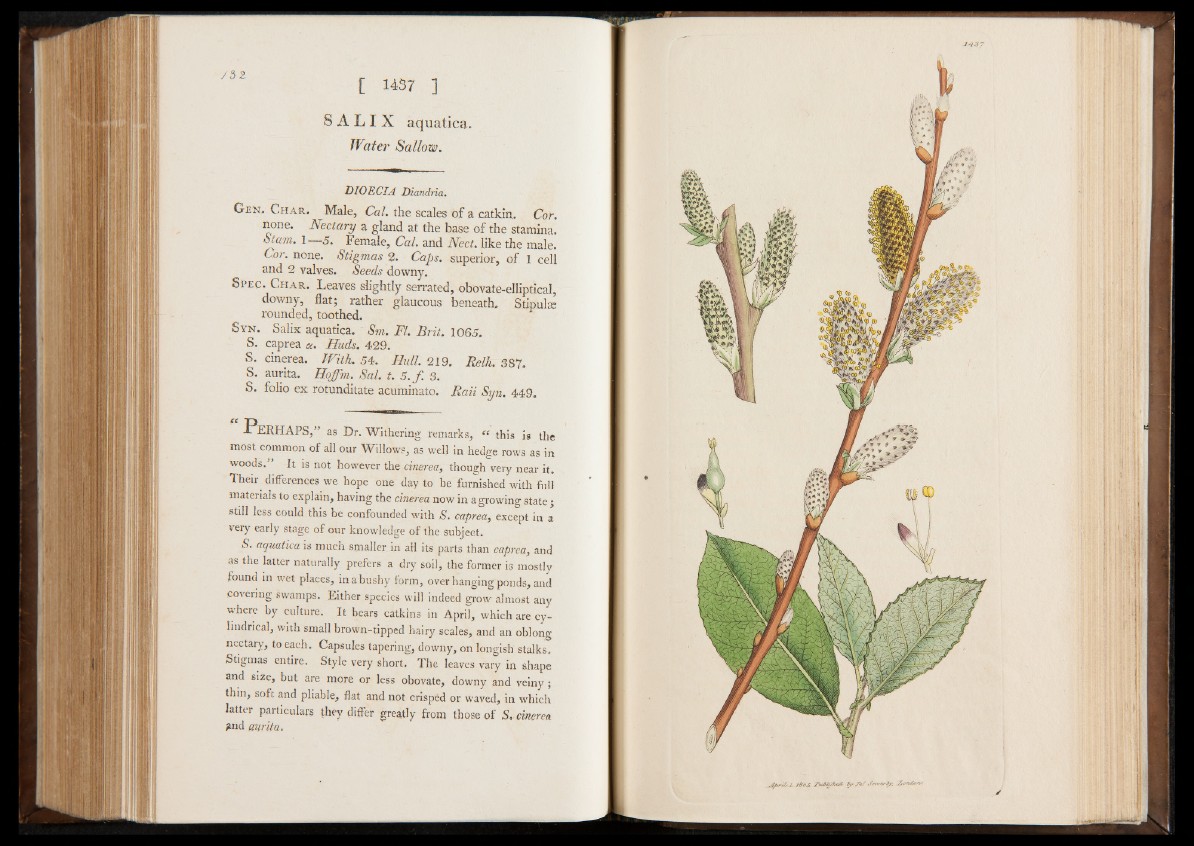
[ 1437 ]
S A L I X aquatic^.
Water Sallow.
DIOECIA Diandria.
Gen, Char. Male, Cal. the scales of a catkin. Cor.
none. Nectary a gland at the base o f the stamina.
Slam. 1—5. Female, Cal. and Meet, like the male.
Cor. none. Stigmas 2. Caps, superior, of 1 cell
and 2 valves. Seeds downy.
Spec. Char. Leaves slightly serrated, obovate-elliptical,
downy, flat; rather glaucous beneath, Stipulse
rounded, toothed. r
Syn. Salix aquatica. Sm. FI. Brit, 1065»
S. caprea a. Huds. 429.
S. cinerea. With. 54. Hull. 219. Relh. 387.
S. aurita. Hoffm. Sal. t. 5 . f . 3.
S. folio ex rotunditate acuminato. Ilaii Syn. 449.
P e r h a p s , ” as Dr. Withering remarks, “ this is the
most common of all our Willows, as well in hedge rows as in
woods.” It is not however the cinerea, though very near it.
Their differences we hope one day to be furnished with full
materials to explain, having the cinerea now in agrowing state ;
still less could this be confounded with S. caprea, except in a
very early stage of our knowledge of the subject.
S. aquatica i3 much smaller in all its parts than caprea, and
as the latter naturally prefers a dry soil, the former is mostly
found in wet places, in a bushy form, over hanging ponds, and
covering swamps. Either species will indeed grow almost any
where by culture. It bears catkins in April, which are cylindrical,
with small brown-tipped hairy scales, and an oblong
nectary, to each. Capsules tapering, downy, on longish stalks.
Stigmas entire. Style very short. The leaves vary in shape
and size, but are more or less obovate, downy and veiny;
thin, soft and pliable, flat and not crisped or waved, in which
latter particulars they differ greatly from those of S, cinerea
and aurita.